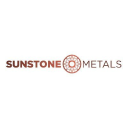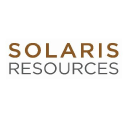Ecuador’s New Mining Tax Could Erode Exploration Investment

What Investors Need to Know
Ecuador is poised to introduce a sweeping new mining tax regime that could significantly impact the country’s attractiveness to exploration-focused investors. President Daniel Noboa’s administration is seeking to generate $229 million in revenue through a newly proposed Mining Inspection Fee (Tasa de Fiscalización Minera), aimed at improving technical and environmental oversight of the sector. However, mining industry leaders and analysts warn that the policy—particularly its structure and cost—could deal a severe blow to early-stage exploration, a vital but vulnerable component of the mining pipeline.
A Heavy Burden on Exploration Projects
The Mining Inspection Fee will apply to all mining operations, excluding small-scale miners, and will be calculated on a per-hectare basis. According to Ecuador’s Mining Chamber (CME), the fee will differ depending on the stage of the mining project but is especially punitive during the exploration phase. In fact, the CME argues that the proposed per-hectare fee is so high—up to $11.50/ha—that it risks exceeding the total investment companies typically allocate to exploration activities. For context, this rate is already the highest in Latin America, significantly above Colombia ($6.70), Chile ($4.50), and Peru ($3).
For exploration-stage companies, which typically generate no revenue and face high geological and operational risks, this kind of fee structure presents a disproportionate and potentially deal-breaking obstacle. The CME has called the proposed measure “technically unfeasible,” warning that it transforms regulatory oversight into a barrier to entry rather than a mechanism for responsible sector development.
A Cadastre Reopening Sends Mixed Signals
Amid this proposed fee, Ecuador is also reopening its mining cadastre for the first time since 2018—a move that had been widely anticipated by the industry. Beginning June 16, 2025, the cadastre will allow new applications for non-metallic, small-scale concessions (e.g., sand and gravel), with access to metallic exploration licenses expected to resume later in the year. While the reopening is a positive step in principle, the restrictive initial scope may limit immediate opportunities for investors focused on hard-rock mineral exploration. Combined with the introduction of the new tax, this mixed messaging may undermine investor confidence in Ecuador’s regulatory consistency and long-term commitment to mining development.
Fiscal Pressure and Policy Risks
The introduction of the Mining Inspection Fee comes at a time when Ecuador faces a $4.6 billion fiscal gap and is under pressure from the IMF to stabilize its finances. Mining is one of the country's few high-potential revenue generators, and the government is clearly moving to accelerate value capture from the sector. But Ecuador already imposes a sliding-scale royalty system ranging from 3% to 8% based on commodity prices, placing many miners near the upper end of that range given current gold and copper prices. Additional burdens such as the proposed oversight fee may push total fiscal take into uncompetitive territory, especially for projects still in the pre-revenue stage.
The CME has criticized the fee’s design as lacking proportionality, reasonableness, and a link to the actual service provided. It also violates, according to the Chamber, constitutional principles around fiscal fairness. Investors are right to question whether the new fiscal terms are sustainable—or even enforceable—given the political and legal risks that may emerge from such sweeping changes introduced without full industry consultation.
Regional Disadvantage & Capital Flight Risk
The implications for Ecuador’s exploration competitiveness are stark. In 2024, Ecuador attracted just $67 million in exploration investment—a fraction of what peer countries received: Argentina ($493 million), Peru ($568 million), and Chile ($637 million). That gap is likely to widen under the new fee structure. Despite offering the possibility of fiscal stability through investment protection agreements, Ecuador’s overall cost profile—including high royalties, legal uncertainty, and now inflated per-hectare charges—makes it one of the least attractive jurisdictions in the region for greenfield exploration.
This places Ecuador at risk of a capital flight scenario, where mining companies—especially juniors—redirect exploration budgets to more predictable, investor-friendly markets. With exploration forming the foundation for future discoveries and mine development, the long-term consequences could be a deceleration in Ecuador’s mining growth and diminished economic returns for the state.
What Investors Should Watch
While the cadastre reopening signals an intention to re-engage with the global mining industry, investors must approach Ecuador with caution. The phased rollout of the cadastre, the details of the Mining Inspection Fee’s implementation, and whether the government is open to recalibrating the structure following industry backlash will be key indicators. For now, high-risk, early-stage investors will need to run updated fiscal models and consider advocacy or partnership strategies to reduce exposure to regulatory volatility.
Ultimately, Ecuador remains a jurisdiction with significant geological promise—but unless the government revises its approach to balancing oversight and fiscal extraction, it may struggle to realize its full potential as a competitive exploration destination in Latin America.
Analyst's Notes




Subscribe to Our Channel
Stay Informed





















































